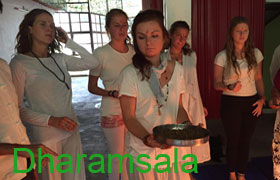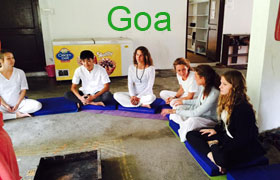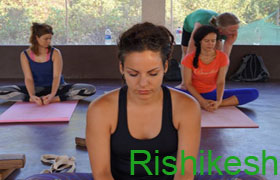Yoga Sutras Patanjali 33
13. These lands, if show or inert, are of the way of the Three Potencies.
The Three Potencies are the three showed modifications of the one primal material, which remains inverse to recognizing”, awareness. These Three Potencies are called Substance, Force, Darkness; or saw rather for their ethical coloring, Goodness, Passion, Inertness. Each material manifestation is a projection of substance into the unfilled space of haziness. Each mental state is either great, or passion, or latent. Thus, if subjective or objective, inactive or show, all things that present themselves to the discerning cognizantness are intensified of these three.The Yoga Sutras of Patanjali compactly layouts the symbolization and study of Yoga reflection for Self-Realization.
14. The outside appearance of an article happens to the point when the changes are in the same stage.
We ought to be slanted to express the same law by saying, case in point, that a sound is perceptible, when it comprises of vibrations inside the compass of the sound-related nerve; that an item is noticeable, when either specifically or by reflection; it sends onward aluminiferous vibrations inside the compass of the retina and the optic nerve. Vibrations beneath or above that compass make no impression whatsoever, and the item remains indefinite for illustration, a pot of bubbling water in a dull room, however the pot is sending onward warm vibrations nearly similar to light. Along these lines, when the vibrations of the item and those of the discerning force are in the same stage, the outside manifestation of the item happens. Yoga sutras of Patanjali works at heart with the life in the structure, through the investigation of pranayama, or energy control.
There appears to be a further recommendation that the show up of an item in the “present,” or its remaining stowed away in the “past,” or “future,” is similarly an inquiry of stage, and, simply as the extent of vibrations discerned could be expanded by the improvement of finer faculties, so the observation of things past, furthermore things to come, may be simple from a higher perspective.
15. The ways of material things and of states of consciousness are different, as is show from the way that the same article may transform distinctive impressions in diverse personalities.
Having demonstrated that our substantial condition and circumstances rely on upon Karma, while Karma relies on upon recognition and will, the savvy distinguishes the way that from this may be drawn the false reasoning that material things are in no clever distinctive from states of psyche. The same thought has been happening, to all thinkers; and, by variety of logics, which arrived at the same clever conclusion; that the material world is not made by the inclination of any human personality, however is somewhat the indication of the totality of unobservable Being, if we call this Mahat, with the people of yore, or Ether, with the moderns. The essential thought of yoga is to unite the atma or singular soul with the paramatma or the Universal Soul.
16. Nor do material articles rely on a solitary personality, for how might they be able to remain destination to others, if that brain stopped to consider them?
This is however a further improvement of the prospect of the going before sutra, carrying on the feasibility, the entire world is serious, yet its material understanding is needed, regular, controlled by law, not subject to the whims or confirmations of a solitary personality, unwelcome material things may be gotten away by otherworldly development, by climbing to a domain above them, and not by denying their presence on their own plane. So our framework is not, one or the other materialistic, nor hopeful in the amazing sense, yet rather intuitional and profound, holding that matter is the sign of soul in general, a reflection or externalization of soul, and, for instance soul, all around loyal to law. The way of liberation is not through foreswearing of matter however through foreswearing of the wills of self, through submission, and that yearning which assembles the vesture of the profound man.
17. An item is discerned, or not observed, proportionately as the brain is, or is not, tinged with the shade of the article.
The least difficult appearance of this is the matter of attention. Our psyches capture what they wish to catch; all else passes unnoticed, or, then again, we discern what we despise, as, for instance, the clamor of a passing prepare; while others, used to the sound, don’t recognize it whatsoever. In any case the deeper significance is, that out of the endless totality of questions ever introduce in the universe, and the psyche observes just those which comply with the tone of its Karma. The rest remains unseen, despite the fact that nearby within reach. This otherworldly law has been overall communicated by Emerson: “With endless belongings one can find his street as assuming that they didn’t subsist, and does not once suspect their being. When he needs another object, abruptly he views it, and no more endeavors to pass through it, yet takes an alternate way. When he has debilitated for the time the sustenance to be drawn from any one individual or thing, that protest is withdrawn from his perception, yet despite the fact that still in his prompt neighborhood, he doesn’t suspect its vicinity. Nothing is dead. Men fake themselves dead, and persists mock funerals and sorrowful tribute, and there they stand gazing out of the window, sound and well, in some new and weird mask. Jesus is not dead, he is great alive: nor John, nor Paul, nor Mahomet, nor Aristotle; now and again we accept we have seen every one of them, and could without much of a stretch tell the names under which they go.”The yoga teacher training in Dharamshala offers teaches many types of yoga that relives from all health ailments.




